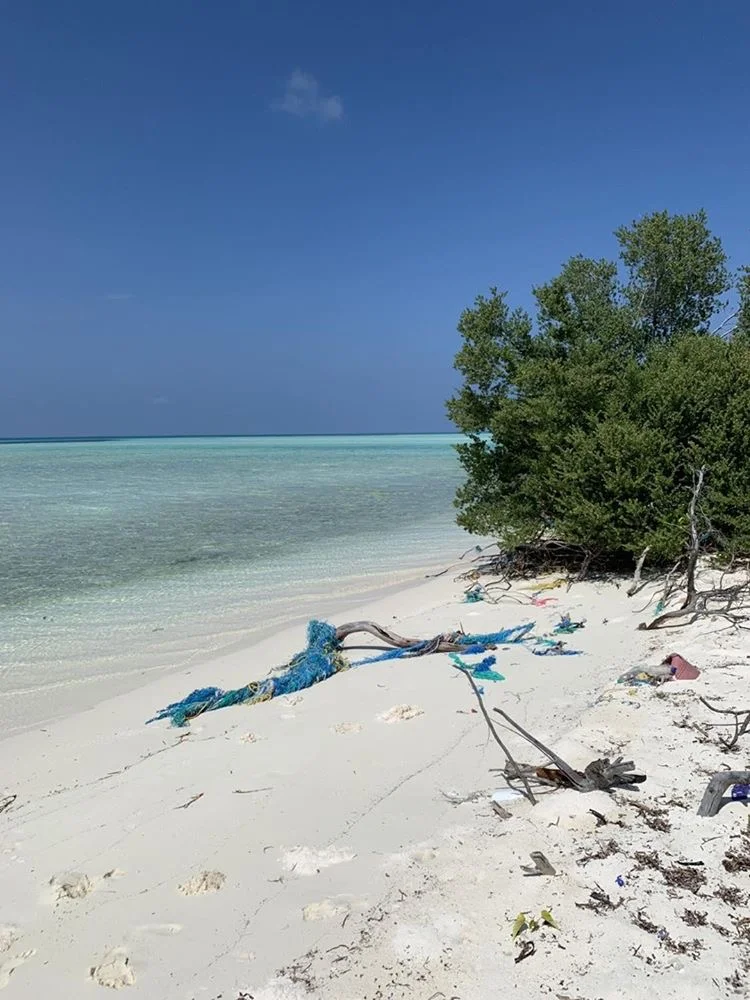Hitchhiking Round the World, On a Plastic Bottle..
Thomas Morris
Floating plastic entangles wildlife, causing injury and mortality. It can also be ingested, leading to blockages, nutrient deficiencies, and endocrine effects. Most people are aware of these impacts, but a little known threat, is the possibility of plastic debris carrying invasive species to new environments. Read on to find out more...
Having recently moved to an island nation, something that struck me before leaving the airport, were the control measures in place to prevent the introduction of foreign pests into the country. New Zealand has an incredibly strong focus on their biosecurity measures, as the introduction of foreign species has previously decimated local animal populations. For example, New Zealand has had 351 non-indigenous introductions into its marine waters, of these, 187 species have become established on its shores, including algae, barnacles, crabs, bryozoans, sea squirts, mussels and other molluscs. These introductions have the potential to impact local ecosystems in a variety of ways (usually negative).
Introduced species that reproduce quickly, lack native predators, and spread aggressively as a result, utilising local resources at a rate that causes harm to local animals, are called invasive species.
The main way in which marine species are introduced to new areas is through transportation on or within large cargo ships that travel the world. Species attach themselves to these ships, or get trapped in their ballast water. Once the ships have arrived at their destination, they can detach, or are released with the ballast water, introducing the travellers to their new environment. If conditions are right for the spread of this species, they establish themselves and have the potential to become invasive.
But, ships are not the only means by which species can travel across the seas...
Marine debris is increasingly contributing to the transport of invasive species across the oceans. Whilst rafting on natural materials, such as algae, wood or pumice has always occurred, it has not resulted in long distance transport, due to their inherent degradability. Plastic poses a new risk, due to its persistence in the marine environment.
As plastic is generally buoyant, it floats at the surface, carried by wind, waves and currents. Photo: Pixabay.
According to a recent review, species can interact with and attach themselves to a variety of plastic objects, including packaging, microplastics and fishing material like rope and netting. These items are passively carried by oceanic currents to places far away from their origin and have the potential to take the hitchhikers along with them. This phenomenon is termed “rafting” and has not featured in marine plastic research as highly as entanglement, ingestion and toxicity, but the consequences of rafting are significant, particularly if it leads to the introduction of invasive species.
The scale of the possible transport of species is vast. A total of 387 taxa, including prokaryotic (unicellular) and eukaryotic (multicellular) microorganisms, seaweeds, and invertebrates, have been found rafting on floating litter, in every single major ocean. The most commonly found organisms are bryozoans, crustaceans (crab, lobster etc.), molluscs (mussels, snails, etc.), and cnidarians (sea anemones, coral, jellyfish). The conditions on floating debris are particularly favourable for filter feeders, who can scoop up food from the water column as it drifts by.
Researchers are studying the mechanics of how these species are surviving such long trips across the ocean. It is predicted that floating plastic debris becomes a microcosm of their ecological home: essentially a moving hotel, travelling on the oceanic currents. Studies have shown that not only one species colonises a piece of plastic, but an entire group of organisms that span the environment they come from, and some which are picked up along the way. The properties of the plastic, such as size, rugosity, and polymer type, determine the microbial community which colonises it. This can then determine what latches on next. Algae, bacteria, crustaceans, molluscs, and more, may all become associated with the raft, affecting characteristics like stability, buoyancy, and degradation. Some species may even reproduce, meaning they may exist for months, if not years - enough time to make a long-haul trip across major ocean basins...
Several studies have looked at the effect of the East Japan earthquake in 2011 on the introduction of invasive species to North America and Hawai’i. One study found 289 living Japanese coastal marine species from 16 different phyla were transported thousands of kilometers across the Pacific Ocean over a span of 6 years, although this is likely an underestimate. This case is the longest transocean survival and dispersal ever documented. Their lifeboat? Plastic.
Plastic debris washed up on foreign shores may introduce marine species into new environments. Photo: Camilla Dellion
It is simply astounding that these stow away animals are making it across the treacherous oceans, surviving and then colonizing new lands. Given the vast amount of plastic debris in the ocean, and the increase in severe storms caused by climate change, the introduction of potentially invasive species due to rafting may become even more prevalent in the future. The negative impacts of their movement is a direct result of our irresponsible treatment of our own waste. We need to curtail our dependence on plastics now, before it’s too late.
The vast amount of plastic in our oceans opens up opportunities for species to be transported and introduced. Photo: Brooke Pyke



